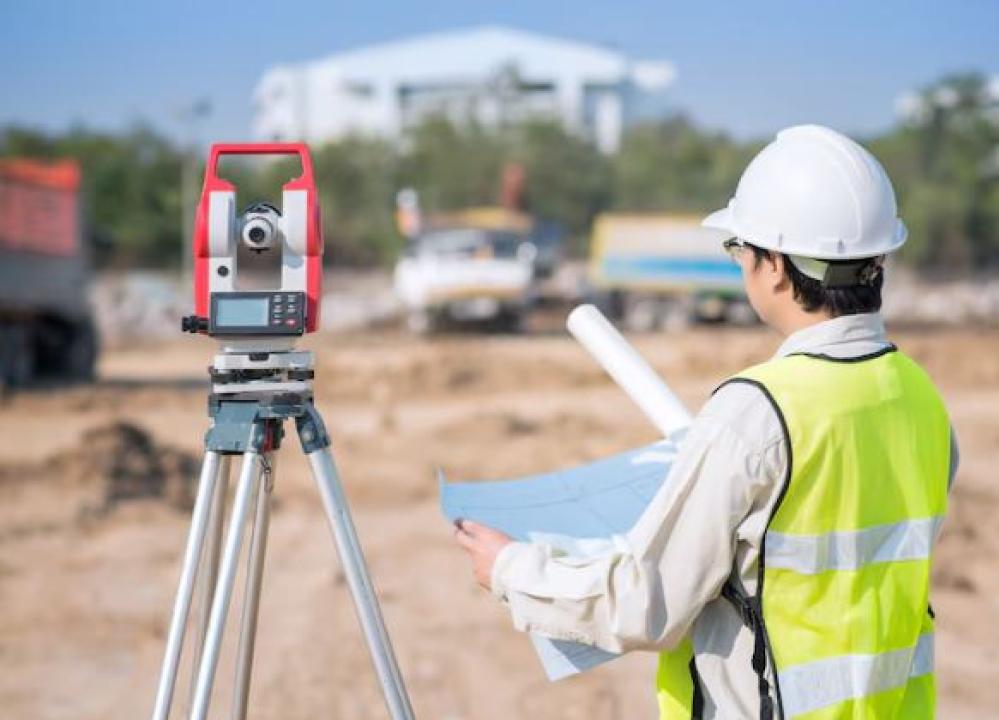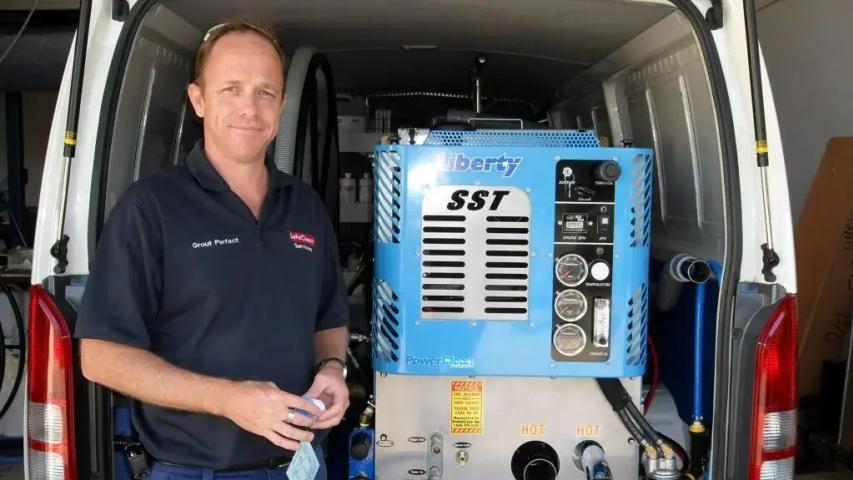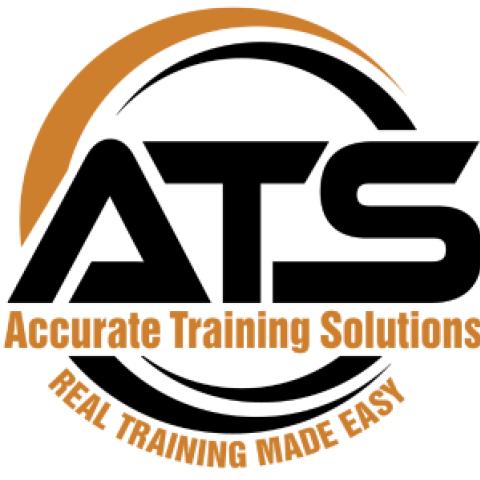Introduction:
Surveying is something quintessential to construction, land development, and mapping projects, and it revolves around control points. These control points are markers laid down as a backbone of accurate measurements, thus forming the base for a reference frame through which the entire surveying will flow.
This article will discuss in detail the significance of control points in surveying and recognize what control points are, followed by a peep into the different methodologies used to establish them in surveying.
What Is a Control Point in Surveying?
Control points in surveying are fixed ground or surface points from which distances, angles, or elevations are measured. These points are established very precisely and provide a framework for the extension of survey networks or for mapping and construction activities.
- Control Point Definition in Surveying:
- Ground Control Points in Surveying:
In technical terms, a control point is a geodetic reference point whose position (coordinates or elevation) is known with precision relative to a specific datum. They are categorized into horizontal control points, which determine the x and y coordinates, and vertical control points, which specify elevation (z-coordinate).
Ground control points are exactly those ground points on the surface of the earth that provide references for remote sensing, photogrammetry, or drone mapping technologies. Ground control points are vital because they guarantee that spatial data being collected will fit correctly into the relevant areas of the real world.
Also Read : Various Types of Scales in Surveying
Importance of Control Points in Surveying
Control points play a critical role in surveying for the following reasons:
- Accuracy and precision - They guarantee that the measurements taken during a survey are practical, reliable, and consistent. This is especially critical for large-scale construction or mapping projects.
- Foundation for Surveys - Control points act as a framework or skeleton for all other measurements. Without them, the survey would lack structure and reference.
- Cost and Time Efficiency - Surveyors can be faster and more efficient if the control point is established because that in effect reduces the need for repeated measurements.
- Integration of Data - Control points enable different survey datasets from ground surveys, aerial imaging, or satellite data to be merged smoothly with one another.
- Legal and Technical Compliance - Many construction and land management projects require certified survey data, respecting proper control points establishment.
Methods of Establishing Control Points in Surveying:
There are many methods and tools used for establishing control points. The methods depend on the required accuracy, scale, and terrain. The following are the main methods:
Triangulation
Overview
Triangulation is a classical method that involves forming triangles between known and unknown points. By measuring the angles of a triangle and at least one side (the baseline), the positions of unknown points can be determined.
Steps in Triangulation
- Select a baseline and measure it accurately.
- Set up control points at the ends of the baseline.
- Measure angles to other points to form a network of triangles.
- Calculate the positions of additional control points using trigonometry.
Advantages
- Provides a robust and reliable network.
- Suitable for large-scale surveys.
Limitations
- Requires unobstructed sightlines between points.
- May be challenging in rugged terrain.
Trilateration
Overview
Unlike triangulation, trilateration relies on measuring distances rather than angles. It uses the geometry of circles or spheres to locate points.
Steps in Trilateration
- Measure the distance between known points and unknown points.
- Use the overlapping arcs or spheres to pinpoint the location of unknown points.
Advantages
- Effective in areas where angles are hard to measure.
- Can be automated with modern instruments like total stations.
Limitations
- Requires precise distance measurements.
- Less effective over very long distances.
Leveling
Overview
Leveling is used to establish vertical control points that determine elevations. It involves measuring height differences between points using tools like spirit levels, digital levels, or laser levels.
Steps in Leveling
- Start from a known elevation (benchmark).
- Measure height differences to other points.
- Calculate the elevation of new points relative to the benchmark.
Advantages
- Provides highly accurate elevation data.
- Essential for construction and drainage projects.
Limitations
- Time-consuming for large areas.
- Requires specialized equipment.
GPS Surveying
Overview
Global Positioning System (GPS) technology is a modern method for establishing control points. It uses satellite signals to determine the positions of points with high accuracy.
Steps in GPS Surveying
- Place GPS receivers at known locations and unknown points.
- Record satellite signals to calculate coordinates.
- Process the data using geodetic software to establish control points.
Advantages
- Rapid and efficient, even in remote areas.
- Eliminates the need for intervisibility between points.
Limitations
- Accuracy can be affected by environmental factors like tree cover or tall buildings.
- Requires access to expensive equipment.
Aerial Photogrammetry
Overview
This method involves using aerial imagery to establish ground control points. Photographs are taken from drones or aircraft, and the positions of points are calculated by comparing overlapping images.
Steps in Aerial Photogrammetry
- Identify and mark ground control points visible in aerial images.
- Capture images from multiple angles and altitudes.
- Process images using software to establish precise coordinates.
Advantages
- Covers large areas quickly.
- Ideal for topographic mapping and urban planning.
Limitations
- Requires clear weather conditions for photography.
- May need additional ground surveys for higher accuracy.
Traverse Surveying
Overview
Traverse surveying involves establishing a series of control points along a path or route. It is commonly used for road construction and linear projects.
Steps in Traverse Surveying
- Measure distances and angles between successive points.
- Calculate coordinates using mathematical methods.
- Adjust the traverse to correct for errors.
Advantages
- Flexible and adaptable to different terrains.
- Can be combined with other surveying methods.
Limitations
- Errors accumulate over long distances.
- Requires careful adjustment and verification.
LiDAR Surveying
Overview
Light Detection and Ranging (LiDAR) is a cutting-edge technology that uses laser beams to measure distances and create detailed 3D models.
Steps in LiDAR Surveying
- Use ground control points to calibrate the LiDAR system.
- Collect data using a drone or ground-based scanner.
- Process data to extract coordinates for control points.
Advantages
- Provides highly detailed and accurate data.
- Efficient for large-scale and complex projects.
Limitations
- High cost of equipment and processing.
- Requires expertise to operate.
Combining Methods for Optimal Results:
In many cases, surveyors combine multiple methods to establish control points. For example, GPS and leveling might be used together to ensure both horizontal and vertical accuracy. Similarly, aerial photogrammetry can be supplemented with ground surveys for finer precision.
Challenges in Establishing Control Points:
While control points are indispensable, establishing them comes with challenges:
- Terrain Difficulties: Rugged or inaccessible areas complicate the process.
- Environmental Factors: Weather, vegetation, and human activity can affect accuracy.
- Equipment Costs: Advanced technologies like GPS and LiDAR require significant investment.
- Error Propagation: Small errors in measurements can magnify across the survey network.
Conclusion:
Control points are at the heart of accurate and reliable surveys whether mapping, construction, or land management.
To know what a control point is in surveying, to appreciate their significance, and to get familiarized with methods of establishing control points in surveying empowers surveyors to deliver results in less time with utmost accuracy. These methods range from outmoded triangulation to modern LiDar and GPS techniques, depending on the characteristics of the project, terrain, and resources capacity.
Control points are investments-a well-worth-it investment; a well-founded control point's establishment translates to far fewer errors and makes a project successful.
For a surveyor or construction manager, what is imperative in order to excel in the art of surveying is being well informed of control points and their methods.

















